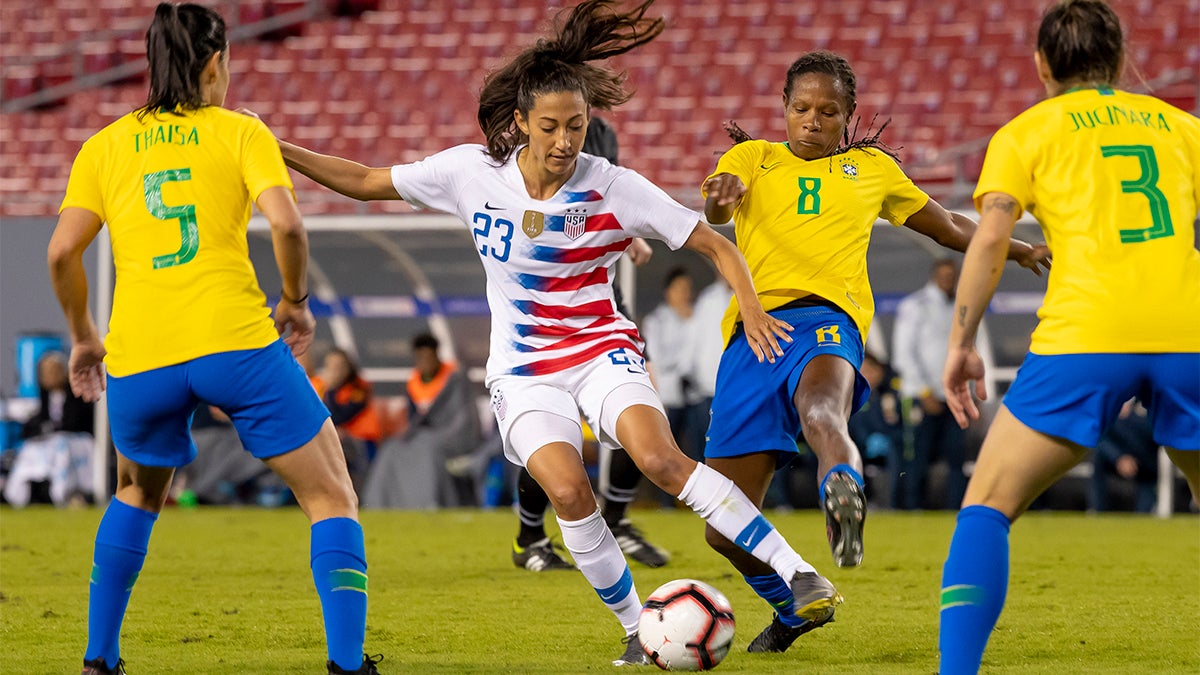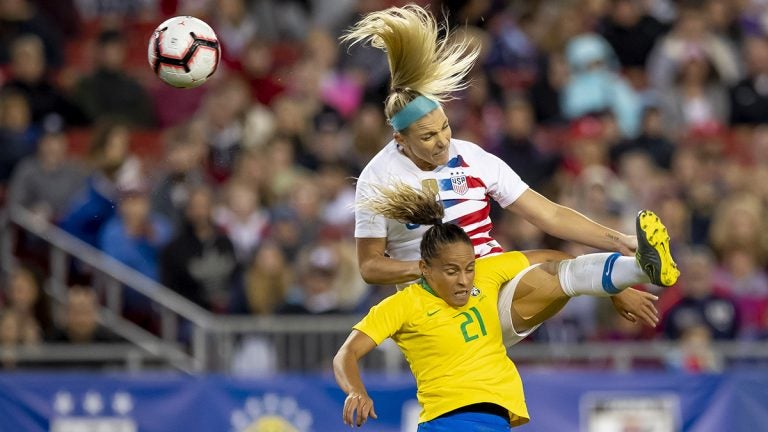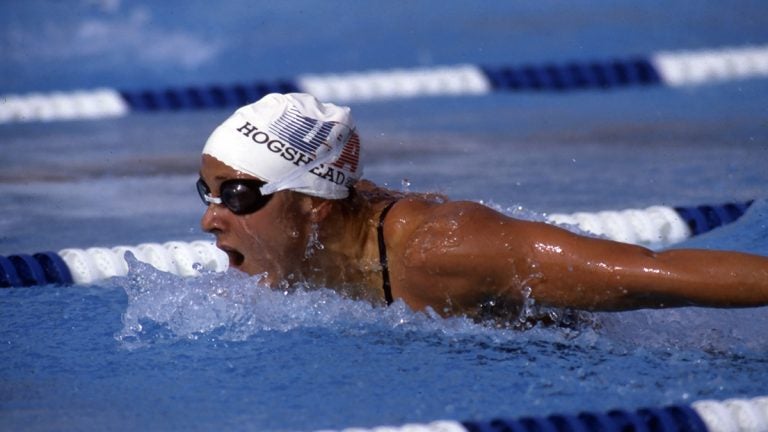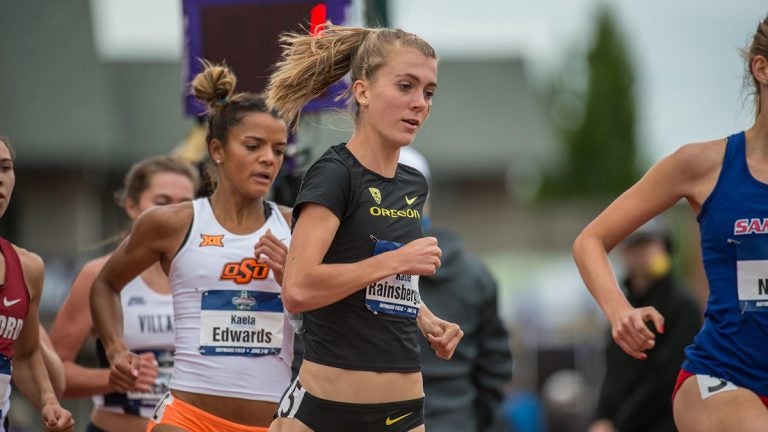Opinion: USWNT discrimination lawsuit underscores importance of Title IX
Making a dramatic statement on International Women’s Day, 28 players from the United States women’s national team (USWNT) filed a complaint in federal court that the United States Soccer Federation (USSF) is violating the Equal Pay Act and Title VII of the Civil Rights Act of 1964. The plaintiffs assert USSF is paying the women less than the men for equal work and is discriminating against the women by denying them equal employment conditions.

The lawsuit provides a nice opportunity to correct some commonly held misconceptions about the state of women’s professional sports as well as women’s sports history. It demonstrates an understanding of what gender equality means in practice and of the structures and mechanisms organizations should consider. It underscores the incredible importance of Title IX in recent women’s sports history in the United States and presents an opportunity for reflection as we approach the 50th anniversary of the seminal law and consider its legacy.
Title IX — the 1972 U.S. law that requires schools to provide equal educational opportunities on the basis of sex — is often credited with creating the girls' and women's sports revolution in the United States, because the law gave girls and women confidence, and something legitimate and official to point to, when asserting the right to play school sports.
Title IX’s footprint is all over this lawsuit. It’s not just that generations of women have benefited from the law to compete in elite sports in colleges and universities. What Title IX also has given us are the tools to build organizations that provide equal opportunity for girls and women and to call out institutions that are underperforming.
The language in the suit is familiar, especially this phrasing:
“The USSF discriminates against Plaintiffs… by denying them at least equal playing, training, and travel conditions; equal promotion of their games; equal support and development for their games; and other terms and conditions of employment equal to the MNT.”
As a historian of women’s sports in the United States, this makes me smile.
If you know your Title IX history, you know the colloquially named “laundry list” of conditions schools must meet to be compliant with the law. Sure, Title IX pertains only to schools and not to professional or national teams. That doesn’t mean we can’t look to the regulations holding up Title IX to guide us as we think about what it means to put nebulous ideas about gender equality into practice.
This is exactly what federal employees in the Department of Health, Education, and Welfare (HEW) did in the mid-1970s as they developed regulations and guidelines for schools to prove compliance with Title IX. They took into consideration both the quantitative and qualitative components of the experience of equal educational opportunity. The “laundry list” spelled out the qualitative elements — things including travel, medical care, training and practice facilities, locker rooms, publicity, uniforms, equipment and coaching. It’s not just the right to play; it’s the right to all the benefits and support structures enjoyed by boys and men. HEW performed this groundwork, giving us one of the greatest gifts of Title IX.
The USWNT lawsuit also provides an opportunity to correct misinformation about the (un)popularity of women’s professional sports, past and present.
The promotions part of both the Title IX regulations and the USWNT lawsuit is important. USSF has argued that part of the justification to pay and support women less than men is they are not as popular. This is the (tired) circular (il)logic justifying the perpetual foot-dragging or outright neglect when it comes to broadcasting and covering women’s professional sports. The women aren’t popular, so networks don’t televise them and journalists don’t write about them. (But how are women’s sports supposed to grow in popularity if people aren’t exposed to them?)
The bigger issue for USSF is that this assertion is wrong. The reigning World Cup champions (hint: not the men) regularly enjoy greater TV audiences than the national team that failed to qualify for its most recent World Cup (hint: not the women). Oops.
I teach history at Arizona State University, and historians frequently encounter commonly held ideas about the past that do not line up with factual history. This can be frustrating, because, as the postmodernists tell us, what we collectively believe about the past as a society often holds more power and matters more than the reality of the past and historical facts — sometimes to the point the facts hardly carry any weight at all.
When I teach about sports in the early 20th century, my students are often surprised to learn women enjoyed semipro opportunities to play basketball, sponsored by industrial leagues and corporate teams since at least 1900, and, additionally, women’s basketball was more popular than men’s — for both participants and spectators. Similarly, at the high school level, particularly in rural and southern states, girls’ basketball was more competitive and popular, including state tournaments with tickets more difficult to obtain than those to watch the boys.
We’ve collectively forgotten this history, perhaps because it doesn’t fit neatly into our ideas about progressive, linear change over time, and it muddles and complicates the stories we tell ourselves about women’s sports — namely, women didn’t play in the past and now they do, thanks in large part to Title IX.
Historian Pamela Grundy has conducted much of the research revealing this hidden history, raising awareness, for example, of southern textile league basketball. Hanes Hosiery teams played in a 2,000-seat arena, enjoyed full-season schedules to entertain employees and neighboring communities, and were built from a national recruiting effort in order to win AAU titles, the most prestigious national championship.
Sponsors saw the great advertising opportunity of women’s teams and Grundy notes that in Dallas alone, “teams and tournaments were sponsored by Sanger Department Store, Franklin Motor Car, Sonoco Oil, Employers Casualty Insurance, and Piggly Wiggly Grocers, among others.” The greatest athlete of this era, Babe Didrikson, played for the Employers Casualty Golden Cyclones.
Today, we regularly see women athletes used for publicity campaigns by the companies who endorse them to convey the message that they support girls and women finding their power through sport. In other words, companies know they will sell more products if consumers believe they support girls and women in sport. But that doesn’t necessarily mean the companies are supporting their sponsored women athletes equally to the men they endorse.
For example, riding the coattails of the USWNT lawsuit, adidas announced the company would pay equal performance bonuses to the athletes it sponsors who play for the team that wins this summer’s Women’s World Cup. Andrew Das of the New York Times pointed out that what this really means is that until this point adidas wasn’t paying equal performance bonuses. But the shoe company, just like its competitors, runs frequent ad campaigns celebrating girls and women in sport. It often takes broader pressure to force sponsors’ practices to match their rhetoric.
We may be shocked and appalled to learn USSF has tried to justify unequal pay and gender discrimination under the false pretense that the women’s game is less popular. But this argument by USSF actually falls in line with our inaccurate ideas about women’s sports and women’s sports history. It would have been far more radical for USSF to admit the women are more popular and to support the women’s game and players accordingly. If there’s one consistent throughline when it comes to the history of women in sport, it’s that national and international sports governing bodies dominated historically by men have always treated women athletes as afterthought — as less than. Even when all evidence points to the greatness of the women’s team. If you’ve consumed any messaging using gender-neutral language about “the crisis” in U.S. soccer since the failure of the men’s national team to qualify for the men’s World Cup last summer, you’ve been exposed to this mindset.
So where do we go from here? And what can we do as fans?
Well, for starters, if you like to watch sports, watch more women’s team sports. The USWNT is preparing to defend its World Cup title this summer in France. The quality of play in the WNBA is the best it has ever been — just ask one of the many, many NBA players who are among the loudest supporters (and defenders) of the excellence that is the women’s game right now. We can also be more aware of the language we use, and the way our actions reinforce gender hierarchies in our daily lives. Sport tends to lead the way on these issues, and our women’s national soccer team has given us a great opportunity to think about gender inequities in our places of work, homes and daily interactions.
Victoria Jackson is a sports historian and lecturer of history in the School of Historical, Philosophical, and Religious Studies at Arizona State University





